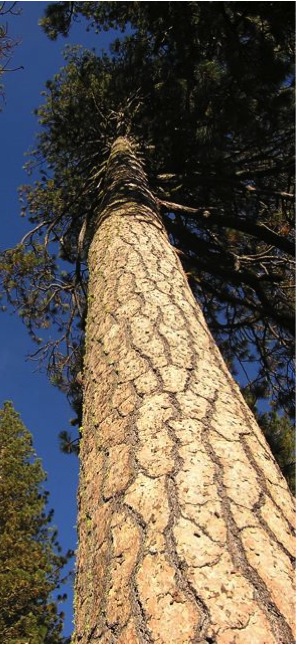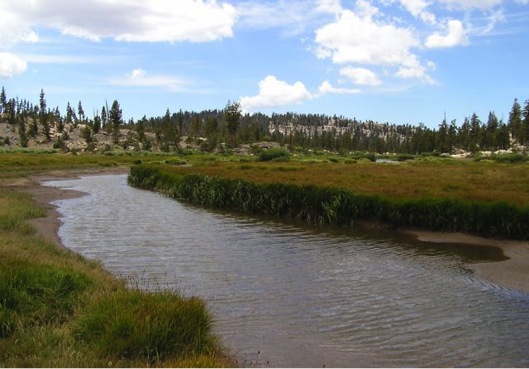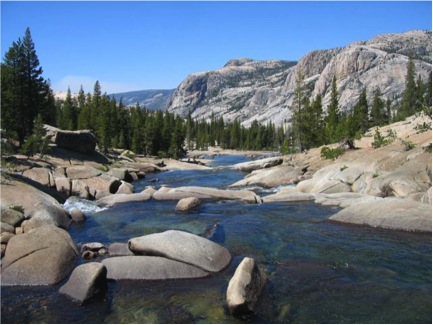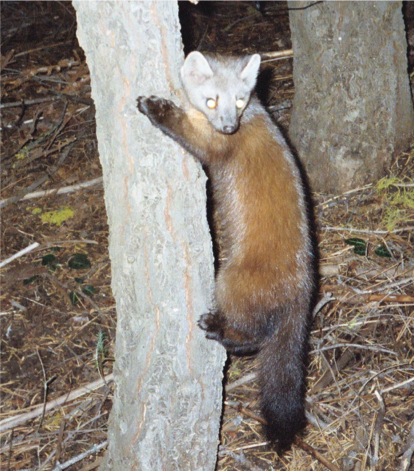Helping To End Clearcuts And Saving Old Growth Trees
When CSERC was formed, the Forest Service was relentlessly clearcutting 20 to 40-acre blocks of local forest, totaling thousands of acres each year. CSERC’s director traveled to San Francisco to meet with USFS Regional Forester Paul Barker. There in Barker’s office, John put on a compelling slide show about clearcuts – showing graphic photos of the damage to soils, wildlife habitat, and scenic values. Within weeks, Regional Forester Barker announced a plan to phase out clearcutting on national forest lands in the Region.
At that same time in the Stanislaus National Forest, ancient forest groves were being aggressively logged — with spectacular giant conifers being cut and sites being converted into tree plantations. CSERC used legal appeals to successfully block a long list of planned logging projects that would have wiped out old forest habitat valuable for the California spotted owl and other old growth dependent species. Thousands of acres of forest with centuries-old trees were spared from cutting.
As part of a conservation coalition, CSERC used another success the Center had gained in the local Stanislaus Forest (thinning logging leaving large trees) as an example to apply to the region. CASPO (California spotted owl) guidelines led to big trees being spared and thinning treatments becoming the standard logging method.
Over 25 years, CSERC has reviewed every Stanislaus Forest project, helped improve many, and helped block a few egregious ones. In the process we built strong working relationships with USFS field-level employees. One district ranger touted CSERC as her “eyes and ears” for what was happening in her district of the forest.

Serving As A Defender Of The Region’s Wild Places
In the first few years after CSERC began work, environmental groups across California rallied together to try to protect wild areas from road construction and logging. Because CSERC had convinced Stanislaus Forest officials to keep logging out of roadless areas and away from ancient forest groves, that same strategy evolved to become a key focus of the environmental coalition. When pro-wilderness groups statewide agreed to map existing roadless areas in each national forest and to identify which precious resources were at risk, CSERC was the first organization in California to complete the roadless inventory for an entire national forest with maps and detailed boundaries.
 After seeing destructive projects enter local wild areas, CSERC staff made wildland protection a high priority. Since that time, no new roads have been built in any roadless area in the Stanislaus Forest, and no logging has been done in roadless areas. After one wildfire, CSERC’s intensive fieldwork at North Mountain proved to the Forest Service that their plan to salvage log millions of board feet of supposedly dead old growth trees was wildly misguided. In cooperation with The Wilderness Society, CSERC helped halt that old growth logging plan. Logging plans in two other roadless areas were also turned back under CSERC’s leadership. Today roadless areas are mostly safe from logging and roads, but other threats remain.
After seeing destructive projects enter local wild areas, CSERC staff made wildland protection a high priority. Since that time, no new roads have been built in any roadless area in the Stanislaus Forest, and no logging has been done in roadless areas. After one wildfire, CSERC’s intensive fieldwork at North Mountain proved to the Forest Service that their plan to salvage log millions of board feet of supposedly dead old growth trees was wildly misguided. In cooperation with The Wilderness Society, CSERC helped halt that old growth logging plan. Logging plans in two other roadless areas were also turned back under CSERC’s leadership. Today roadless areas are mostly safe from logging and roads, but other threats remain.
Saving Water From Dams, Diversions And Pollution
While CSERC has many achievements tied to water, the single most significant was the major gains won for the Stanislaus River during 7 years of CSERC playing a lead role for the environment in the hydroelectric relicensing process. Over 188 days of meetings attended by CSERC staff, the Center’s expert knowledge of the river and at-risk resources helped gain dramatic improvements in river flows, in wildlife protection, and funding for millions of dollars of recreation improvements. Just in terms of summer flows, instead of 95% of the water being diverted out of the river, CSERC helped gain significant increases in minimum flows to benefit fish, amphibians, and recreation.


Locating Rare At-Risk Wildlife Species
CSERC is the only environmental advocacy group in California that has undertaken 20+ years of baited camera surveys using photo-detection stations. Searching for rare, at-risk wildlife species, CSERC has partnered with Forest Service and Yosemite Park biologists – often providing year-round surveys despite snow and challenging conditions in rugged terrain.
CSERC cameras have proven the survival of American martens in many middle and upper elevation sites. CSERC helped Park Service staff locate the rare Pacific fisher in Yosemite. And in the search for the extremely rare Sierra Nevada red fox, CSERC cameras have discovered foxes in two new territories. CSERC has also provided surveys for great gray owls, rare amphibians, and other at-risk species in order to aid Forest Service and Yosemite Park wildlife detection efforts.
And so much more… From award winning restoration workdays with volunteers; to providing detailed comments on development proposals and county plan policies; to advocating for increased prescribed burning in public forests; to providing website articles about nature in Spanish to reach Latino families….

